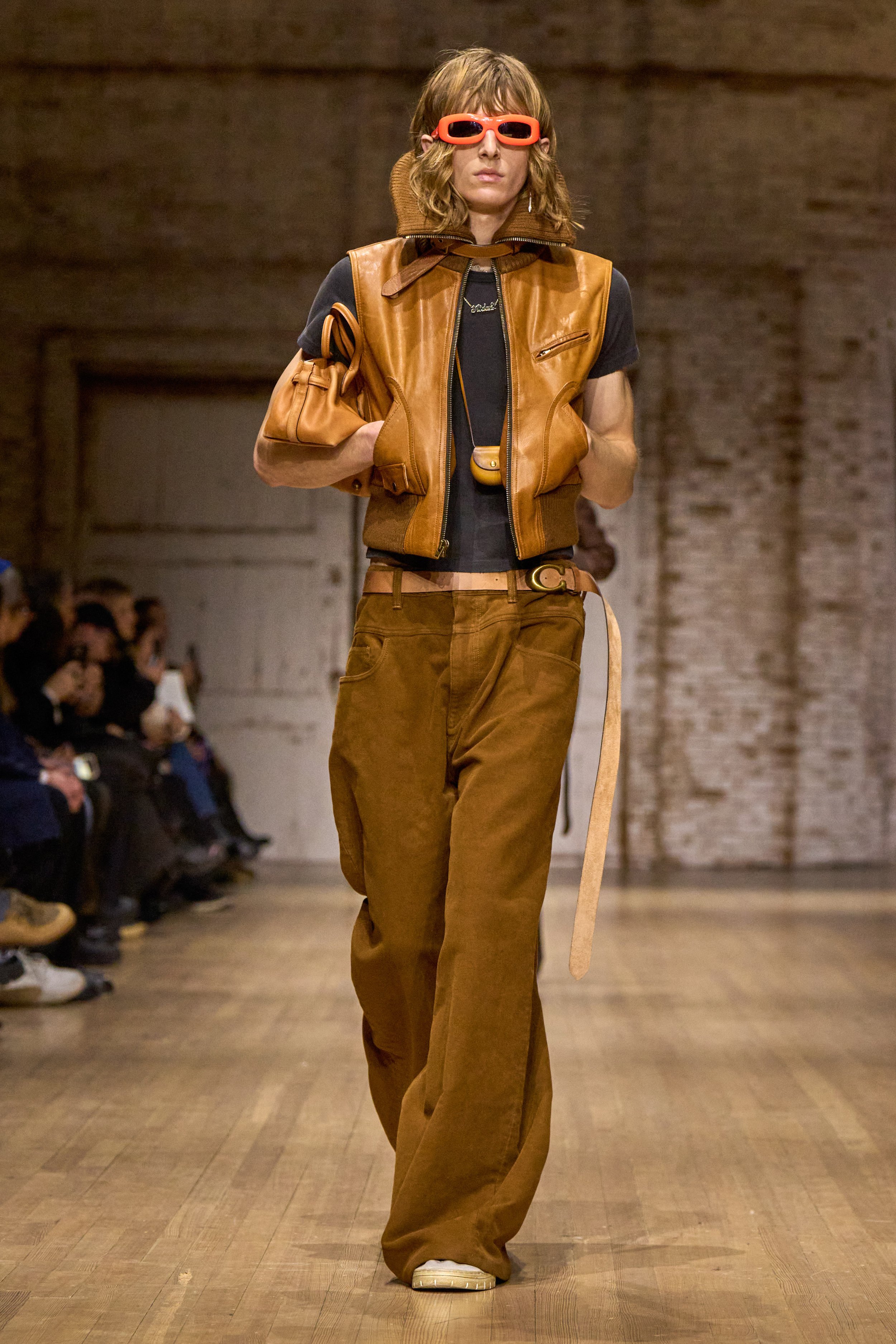A ‘Streetwise’ Coach FW25.
‘One of Vevers’ great strengths is his ability to deliver high-functional clothes with such editorial elan that one could miss their underlying savvy. Here, once again, he built forceful fashion around a pragmatic commercial core.’ - Bridget Foley reviews Coach FW25.
Guests arriving to Coach’s fall show found the Park Avenue Armory transformed into a vast warehouse of soaring, windowed brick walls (printed on canvas). The message: urban mettle, yet with a slight dreamlike quality. The set by Stefan Beckman telegraphed gritty intensity, the mood heightened by a live band, Brooklyn-based Nation of Language. (The music included a last-minute tribute to the late filmmaker David Lynch.)
Through his design process, Vevers reflected on his arrival to New York as a young man in the Nineties, when he became intrigued by the compelling downtown youth culture codified in Kids, Larry Clark’s era-defining film. That era and its denizens impacted him profoundly, and he retains a deep affection for them today. Similarly, he considered today’s youth, whom he cites as an ongoing, essential inspiration. “It’s Interesting when the new generation is referencing something you were part of…it’s emotional,” Vevers said backstage post-show. For Spring, he crosspollinated the streetwise attitudes of both generations while making non-literal references to clothing tropes of the Nineties. Along the way, he tempered edge with gentleness – floppy, fluffy bunny shoes, anyone? “I’m a romantic so I see a romance to that grit…and there’s a certain wide-eyed beauty to it,” he said. “But also, there’s attitude and there’s self- expression.”
And plenty of great-looking clothes. Vevers’ prevailing silhouette for women and men was small-over-ample, with cropped jackets topping super-long, super-wide pants in various fabrics including upcycled denim, sometimes heavily patched. Over the years, he has built a reputation for impressive outerwear and for spring he offered plenty, whether long, sweeping coats or utilitarian jackets, some with a military bent. Volume came in relaxed suits and loose-cut Twenties-ish dresses. Vevers showed these in a pretty-meets-tough context, layering the dresses over pants. But should she wear a dress on its own, a girl is ready for nighttime glam.
In fact, one of Vevers’ great strengths is his ability to deliver high-functional clothes with such editorial elan that one could miss their underlying savvy. Here, once again, he built forceful fashion around a pragmatic commercial core.





























